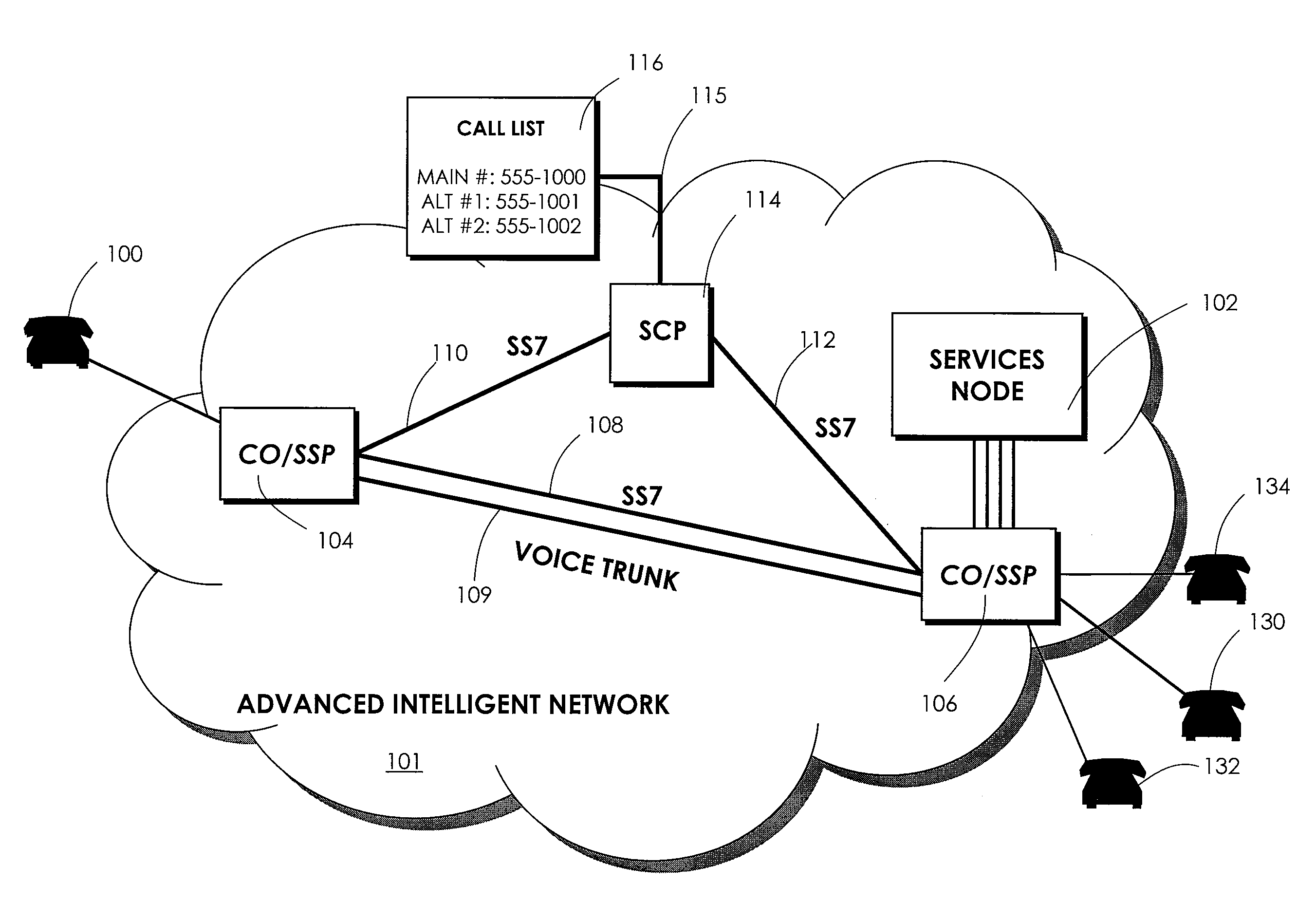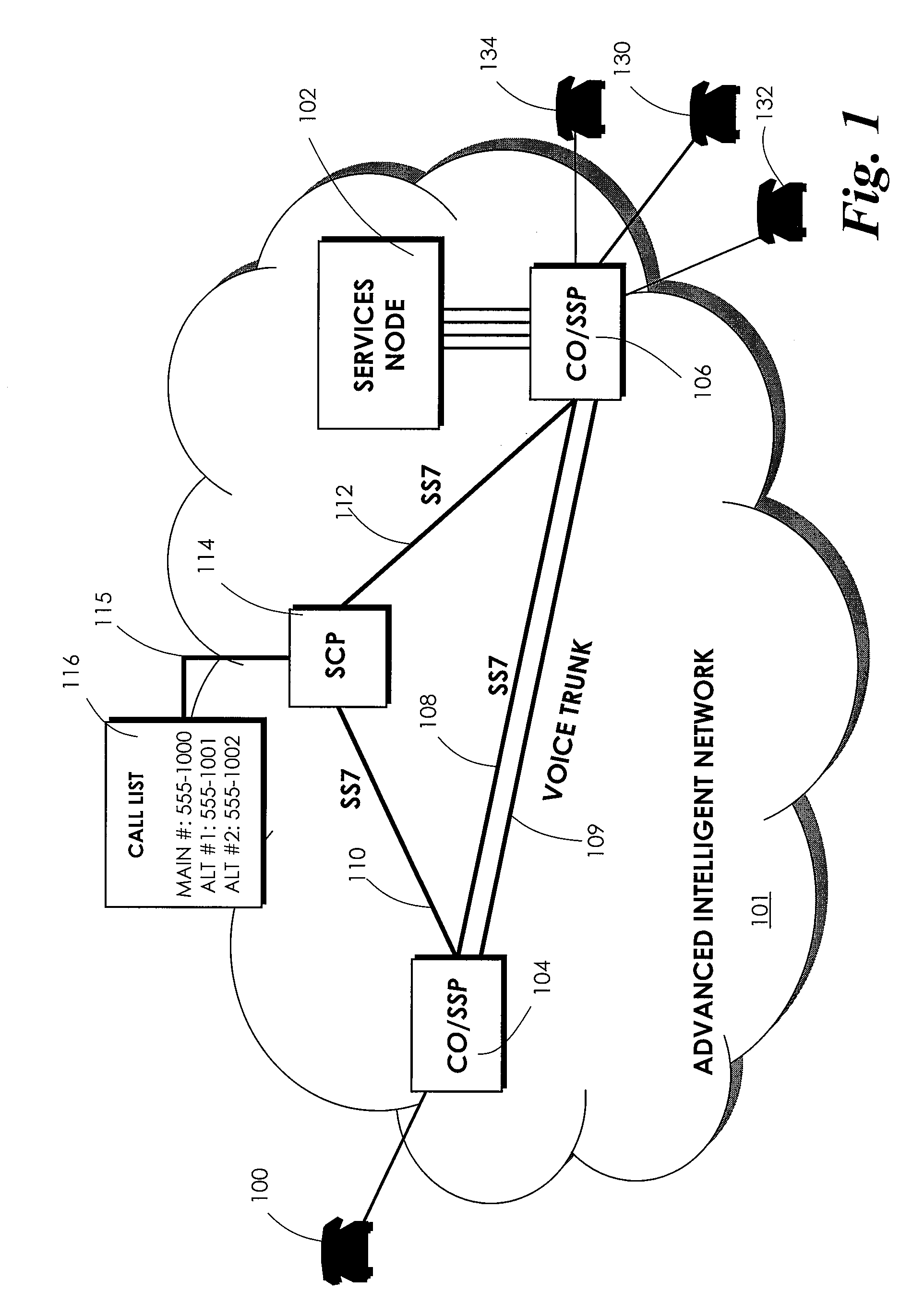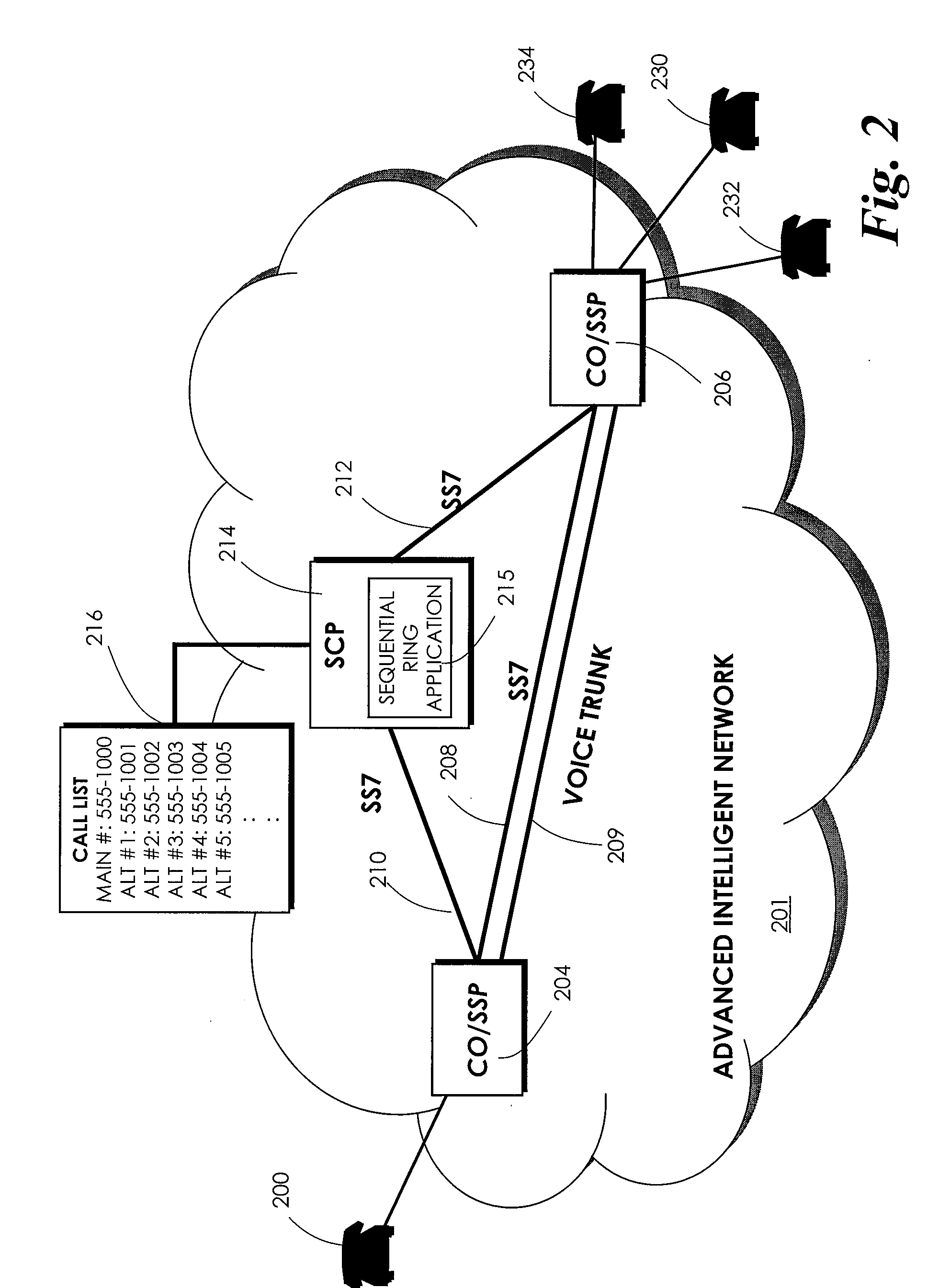Automatically Sequentially Ringing Alternative Telephone Numbers
a telephone number and automatic technology, applied in the field of providing a telephonic connection, can solve the problems of inability to easily modify or customize, the service provided by the system, and the inability to use triggers for multiple services, etc., and achieve the effect of efficient implementation
- Summary
- Abstract
- Description
- Claims
- Application Information
AI Technical Summary
Benefits of technology
Problems solved by technology
Method used
Image
Examples
Embodiment Construction
[0019]FIG. 1 is a block diagram depicting a conventional call forwarding system that operates within a conventional Advanced Intelligent Network. Modern telephone switching conforms to a telecommunications protocol referred to as Signaling System 7 (SS7 ). The AIN 101 is a telecommunications switching network that utilizes the well-known SS7 protocol to connect switching centers and other telecommunications resources to provide call routing and various other services to telephone users. Essentially, the AIN 101 is a collection of telecommunications components and interconnections that support the provisioning of AIN messages known as triggers and enable the components to respond to fired triggers by generating responses or by executing an associated instruction. Some AIN components can generate queries and other AIN components can generate responses to queries. Some queries are generated after a certain condition occurs, for example, the firing of a trigger at an SSP.
[0020] A conve...
PUM
 Login to View More
Login to View More Abstract
Description
Claims
Application Information
 Login to View More
Login to View More - R&D
- Intellectual Property
- Life Sciences
- Materials
- Tech Scout
- Unparalleled Data Quality
- Higher Quality Content
- 60% Fewer Hallucinations
Browse by: Latest US Patents, China's latest patents, Technical Efficacy Thesaurus, Application Domain, Technology Topic, Popular Technical Reports.
© 2025 PatSnap. All rights reserved.Legal|Privacy policy|Modern Slavery Act Transparency Statement|Sitemap|About US| Contact US: help@patsnap.com



